专访丨青年建筑师姜雪竹:梦想之光照亮前行之路
从中国到美国,不同国家的建筑学教育有何不同?从校园studio到建筑设计企业,身份转变又会带来怎样的全新视野?如今,越来越多的中国建筑师拥有国际教育和实践背景,也拥有更开放的思维和更新颖的创意。近日,青年建筑师姜雪竹(Susie Jiang)接受国际设计网采访,讲述了自己12年建筑生涯中的困惑与执着,通过分享多个创意作品阐述了对设计的理解,并表达了在成为优秀建筑师之路上坚定前行、为自己创造价值人生的美好愿景。
How does architecture education differ from China to the United States? From campus to architectural design office, what new vision will the identity change bring? Nowadays, more and more Chinese architects have international education and practice background, as well as more open thinking and innovative ideas. Recently, Susie Jiang, a young architect, had an interview with www.globaldesign.cn. She told us about her persistent life in her 12-year architectural experience. She explained her understanding of design by sharing several creative projects, and expressed her vision of moving forward firmly on the road of becoming an excellent architect.

国际设计网:您在浙江大学读本科,美国哥伦比亚大学读研究生,您觉得国内与国外大学的教育分别有什么特点?
You were an undergraduate in Zhejiang University, and a graduate in Columbia University. What do you think are the characteristics of education in and outside China?
姜雪竹:浙江大学的本科教育非常开放,自由。在我上本科的那个年代(2009级)就已经实现了通才教育。建筑学的教育则偏重于技术性、实践性的发展方向。
哥伦比亚的GSAPP建筑学院作为世界性的老牌建筑学院,一直走在建筑多元性、实验性的最前沿。每个学期会有十几个以上的studio供学生挑选,包含建筑的,非建筑的,传统的,“网红的”等等。对于学生而言,在深刻理解“自己想要什么”的基础上,会得到充分的滋养。
The undergraduate education of Zhejiang University is very open and free. During my time in Zhejiang University (started from 2009), the school had realized generalist education. The architectural education focused on technology and practice in the industry.
As one of the world’s oldest architecture institutions, GSAPP has always been at the forefront of diverse and experimental architectural education. Each semester, there are more than a dozen studios for students to choose from. Including architectural design studio, non-architectural design studio, traditional architectural design studio, media-popular tutor studio and so on. For students, they will be fully nourished if they have a profound acknowledge of “what they really want”.
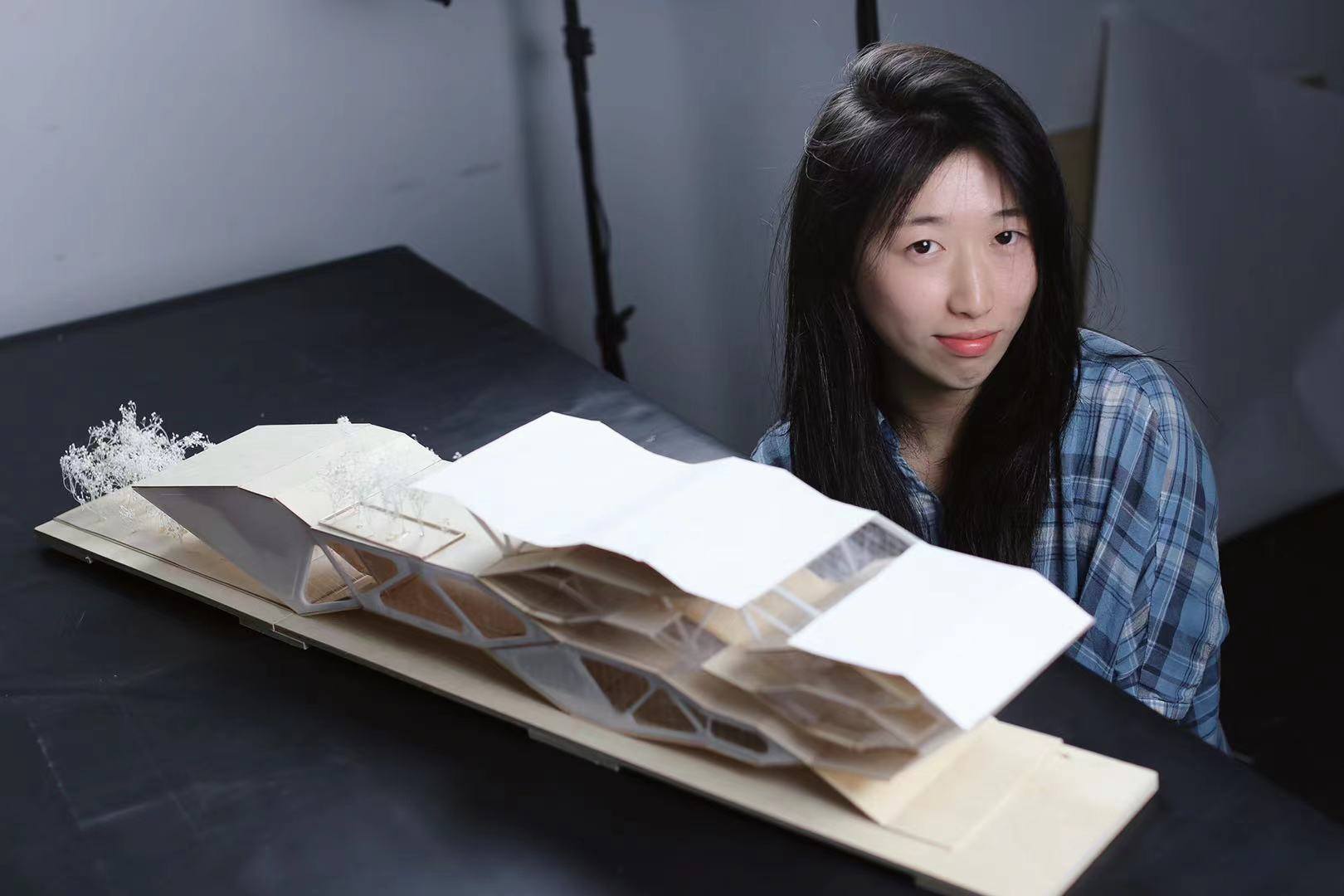
国际设计网:根据您的个人体验,国际建筑设计企业与中国的建筑设计企业,有什么不一样的地方?
According to your personal experience, what are the differences between international architectural design offices and Chinese architectural design offices?
姜雪竹:国际建筑事务所跟学生时代的studio形式颇为类似,在某种程度上衔接了很多学生时代的习惯和方式。
中国的建筑设计企业在时代发展下进步的速度惊人,项目实现的周期短,效率很高。
对于不同的公司,保持自己的优势和风格是最重要的。
The international architecture offices are quite similar to design studio in school days, which is a continuation for many students when it comes to habits and methods.
Chinese architectural design offices are progressing at an amazing speed. The project period is short and the working efficiency is relatively high.
For different offices, the most important thing is to maintain their own strengths and styles.
国际设计网:近年来您参与的设计作品,自己比较满意的有哪些?作为一名建筑师,最让你觉得有成就感的时刻或者事情是什么,为什么?
Which design projects have you participated in recent years that you are satisfied with? What is your most rewarding moment, and why?
姜雪竹:第一个项目是在哥伦比亚大学的春季课程。
该项目主要着眼于剖面的建筑对象(半自治建筑元素,位于较大建筑元素或空间中)的作用。特别令人感兴趣的是,多用途空间和双重功能的重叠和交叉越来越多,以及它们共存的战略性建筑策略。
The first project is a Columbia Spring Studio Project.
This studio looks at the role of sectional architectural objects (semi-autonomous architectural elements places within larger architectural elements of spaces). Of particular interest is the increasing overlap and intersection of multi-use spaces and dual programs, and strategic architectural strategies for their co-existence.
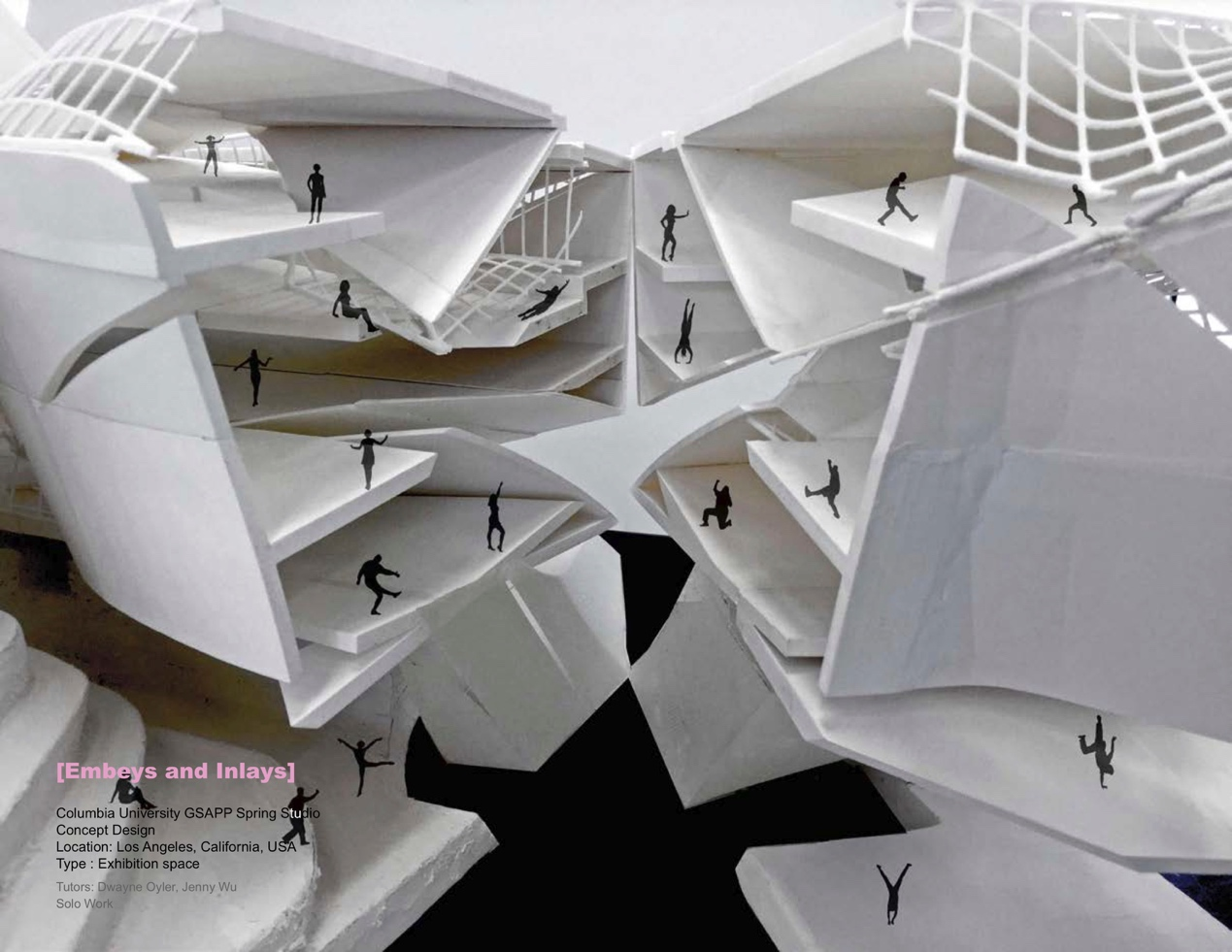
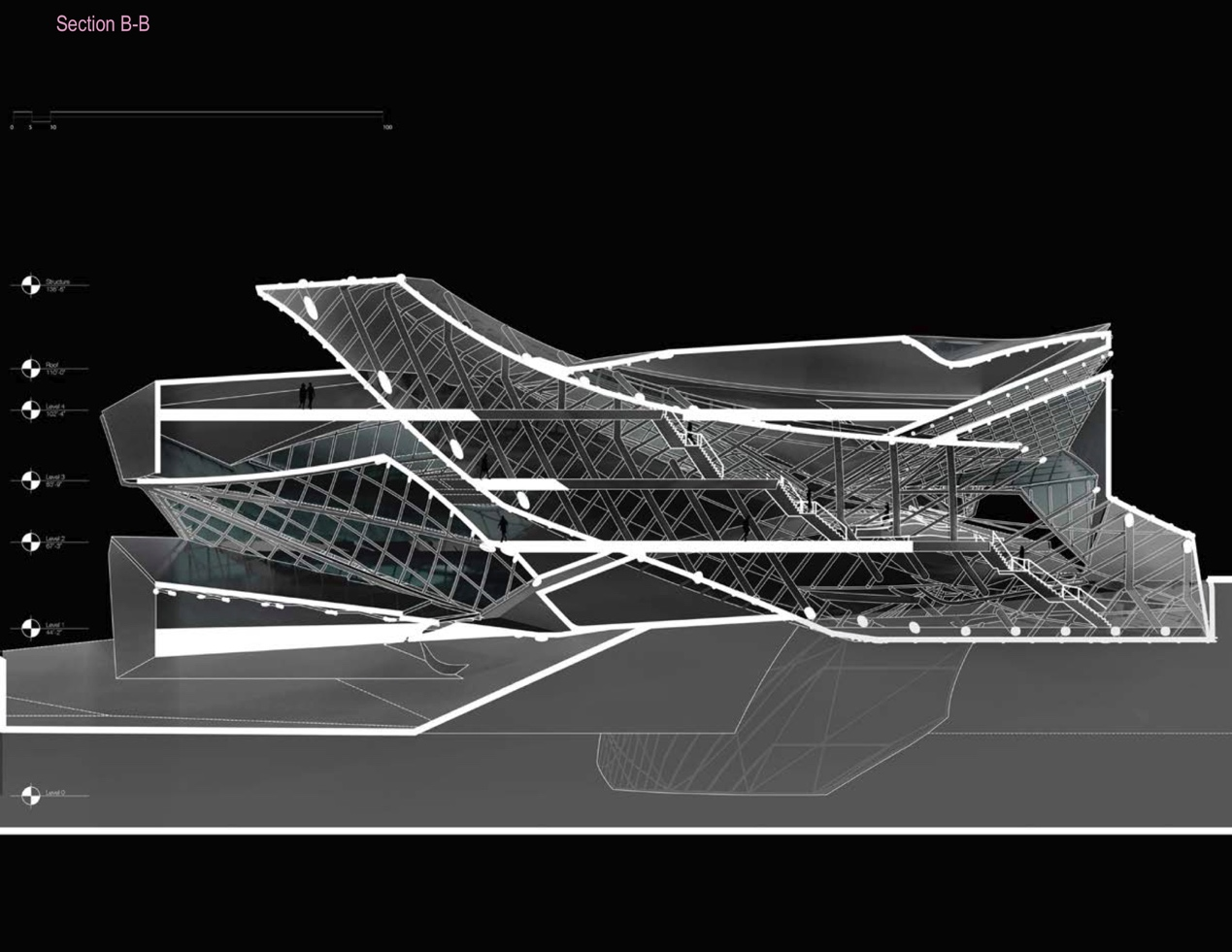
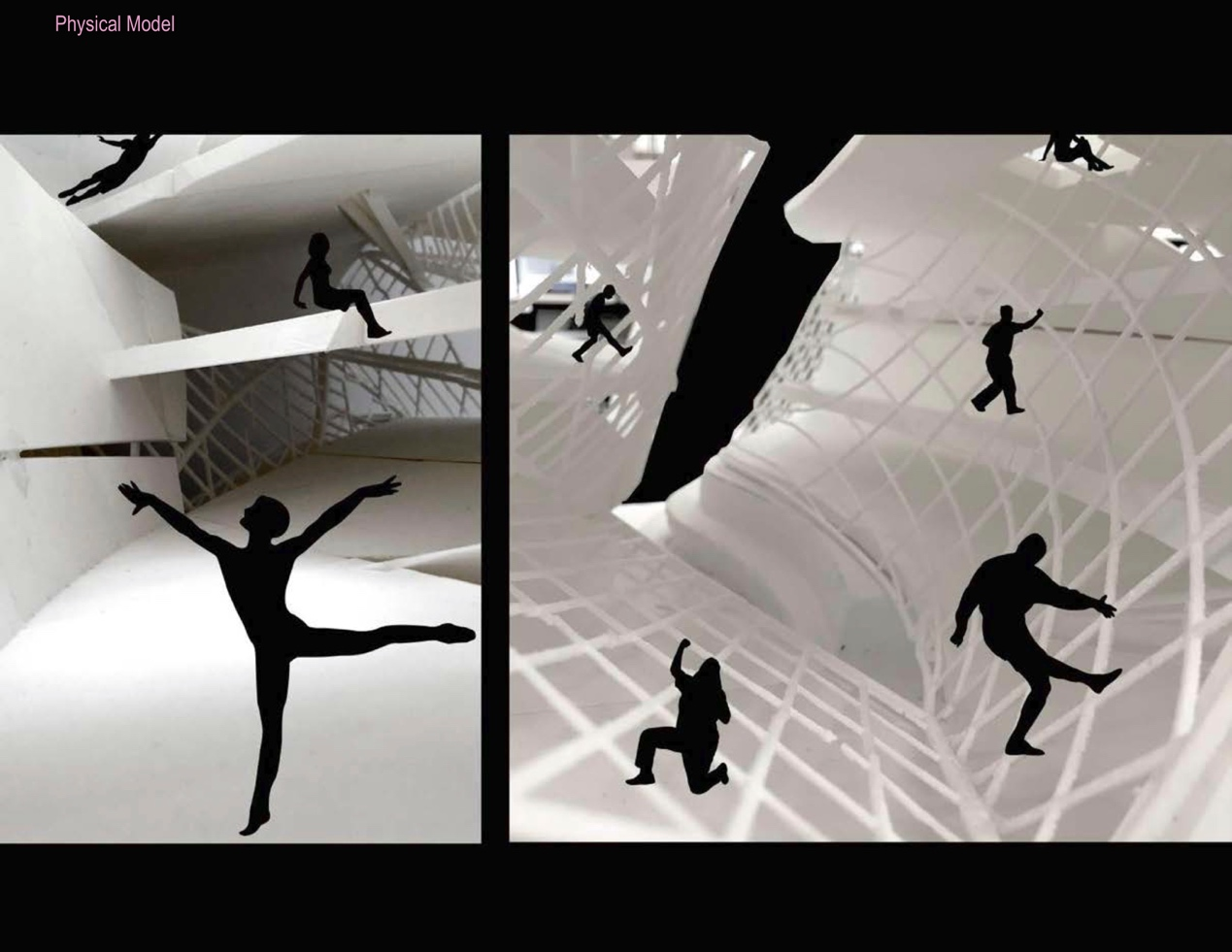
第二个项目是在哥伦比亚大学的秋季课程。
该项目是从美国艺术家Frank Stella的作品研究开始,演变成三维模型的制作。我用热胶水和颜料混合来模拟Stella的一幅作品。不同材质的融合产生了线,线变成了面,面成为了体。在模型中的实验让我想到,不同的建筑材料也可以互相混合。这可能是新建筑材料制造的一个突破点。
The second project is a Columbia Fall Studio Project.
The studio started from research on Frank Stella, the artist, then turned into three-dimensional physical model making. I used hot glue mixed with pigments to simulate one of Frank Stella’s work. Fusion of different materials creates lines, lines turn into surfaces, surfaces grow into volumes. It occurred to me that different architectural materials can be mixed to the fabricative level. It might be a breaking point of new architectural material making.
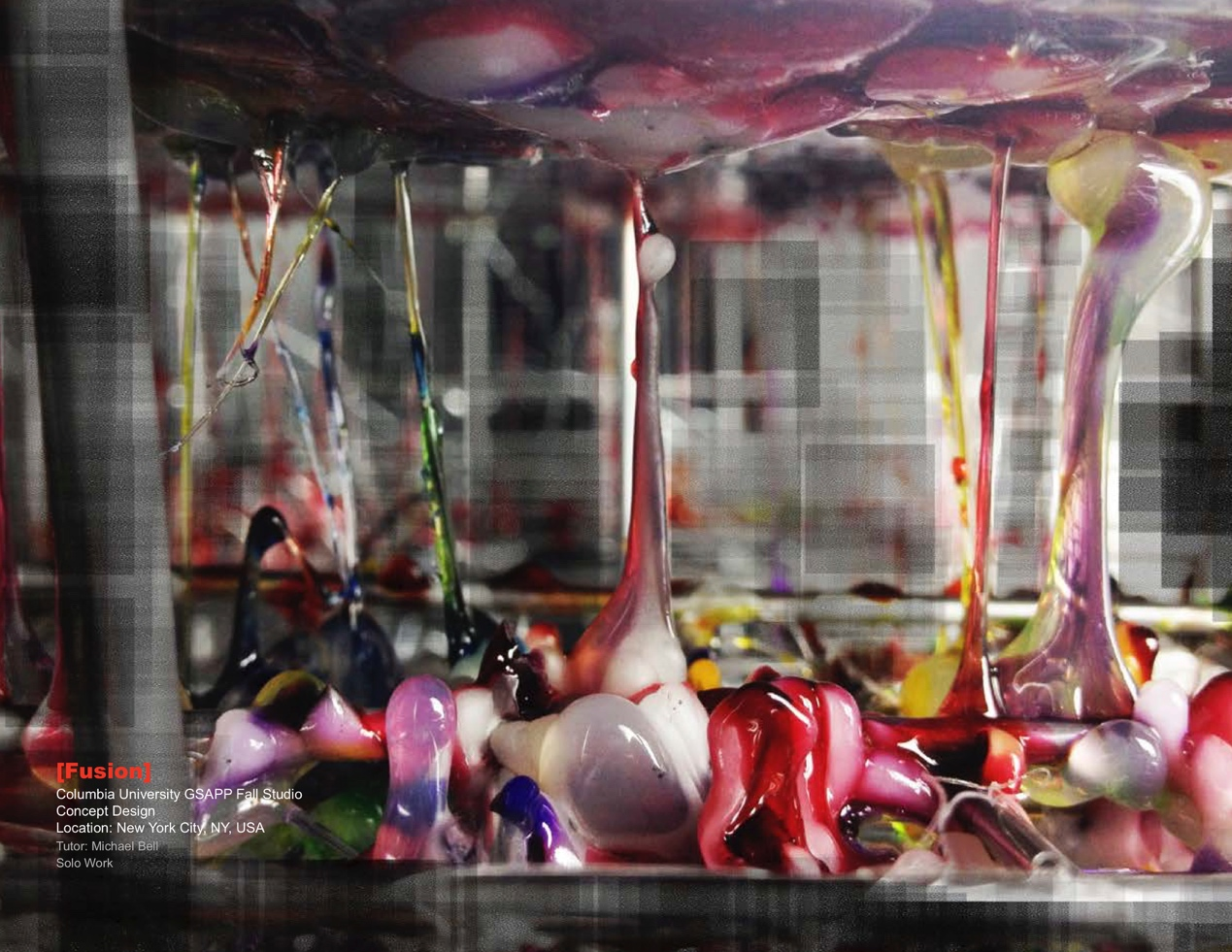
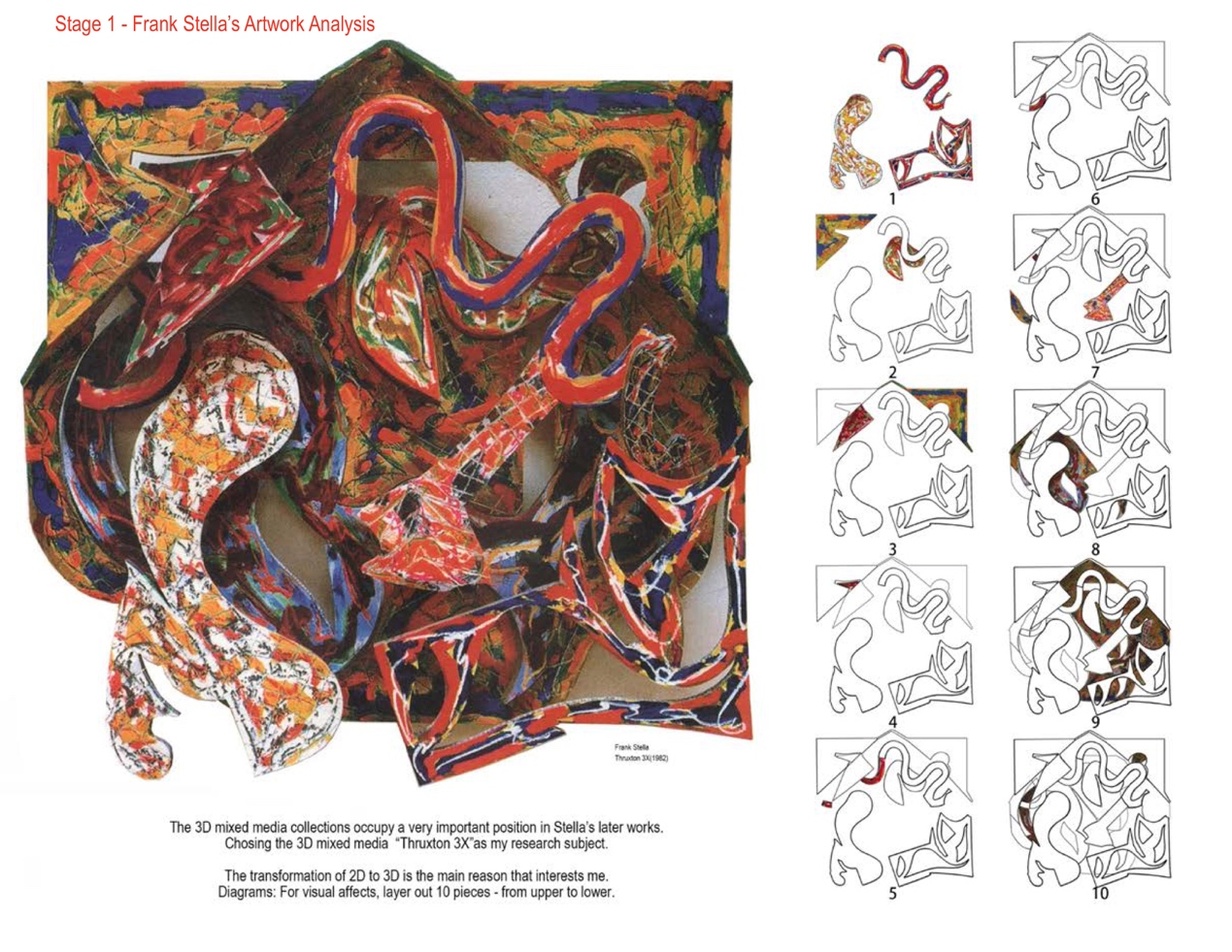
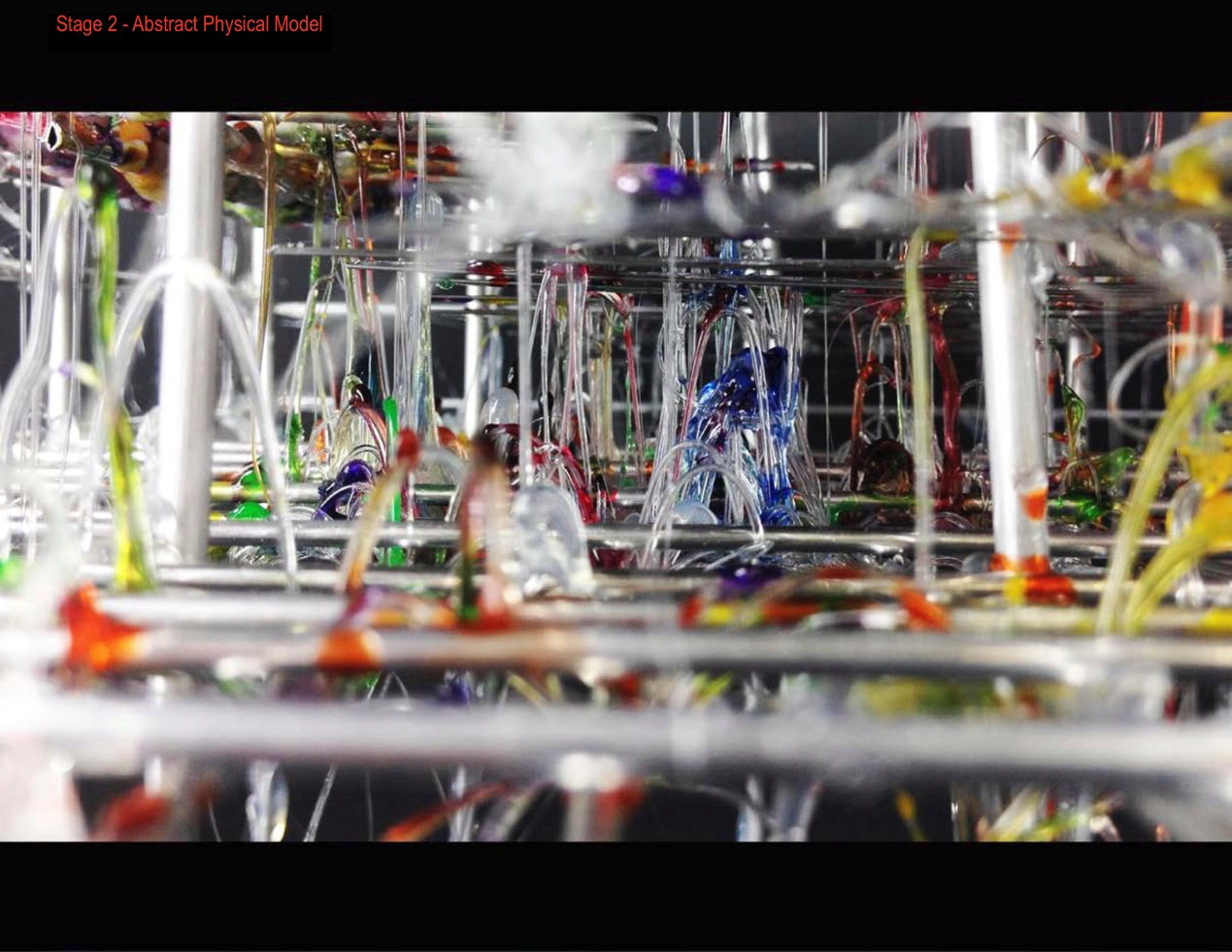
第三个项目是在哥伦比亚大学的夏季课程。
该项目着眼于重新设计纽约市的林肯中心。我和合作伙伴将传统的自上而下的人流方向设计为从上-平行-而下的方向。我们首先将功能放入基地,然后用蜂窝结构连接这些功能。在设计好项目的总体规划后,开始放大到特定一栋建筑,进行平面图和物理模型的制作。
The third project is a Columbia Summer Studio Project.
This studio focused on redesign the Lincoln Center. My teammate and I came up with the idea of changing the traditional up-down circulation into up-inclination- down circulation. We firstly injected boxes with existing programs into the site, then connected those programs with a honeycomb structure. After master plan design, we zoomed in into one particular building, and designed the detailed plan, also made the physical model.
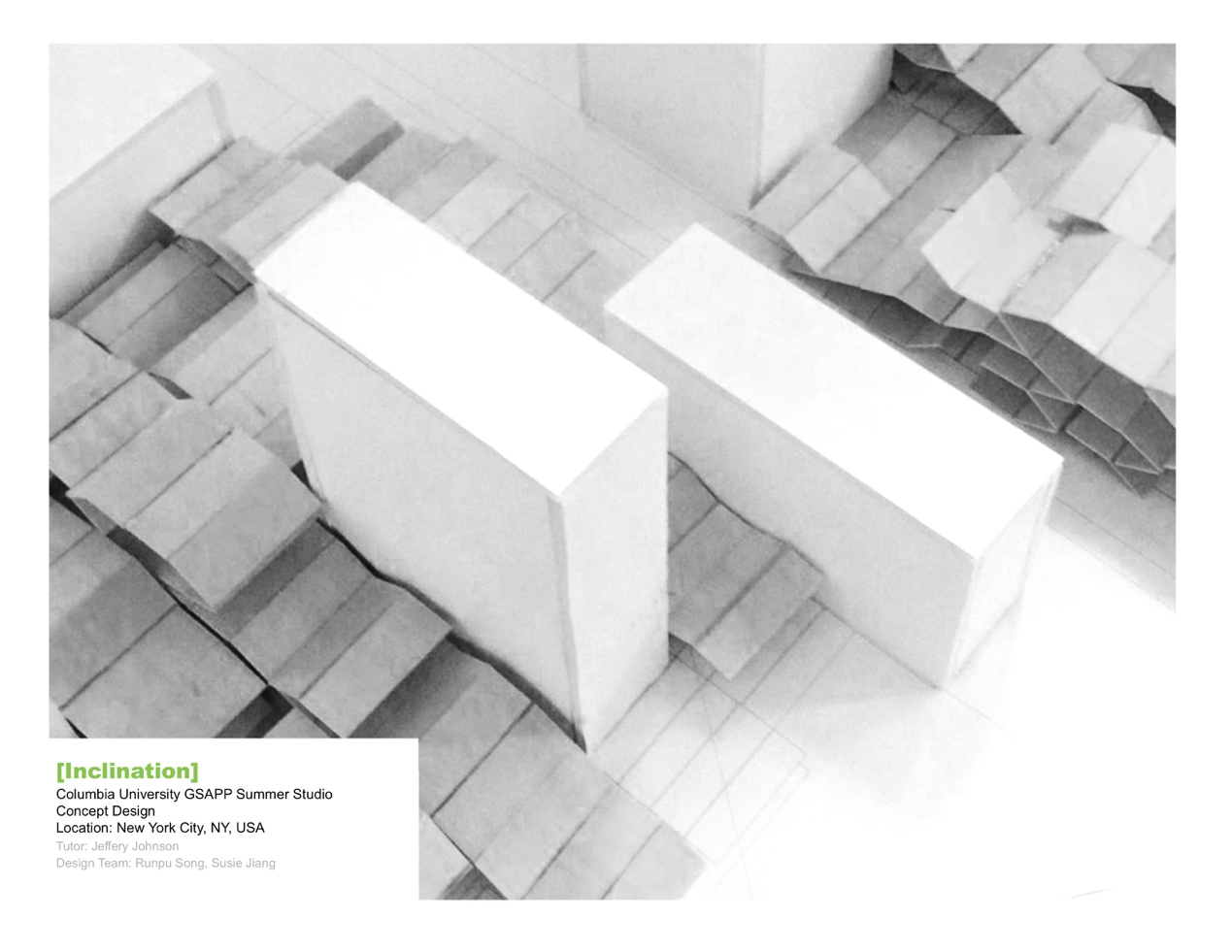
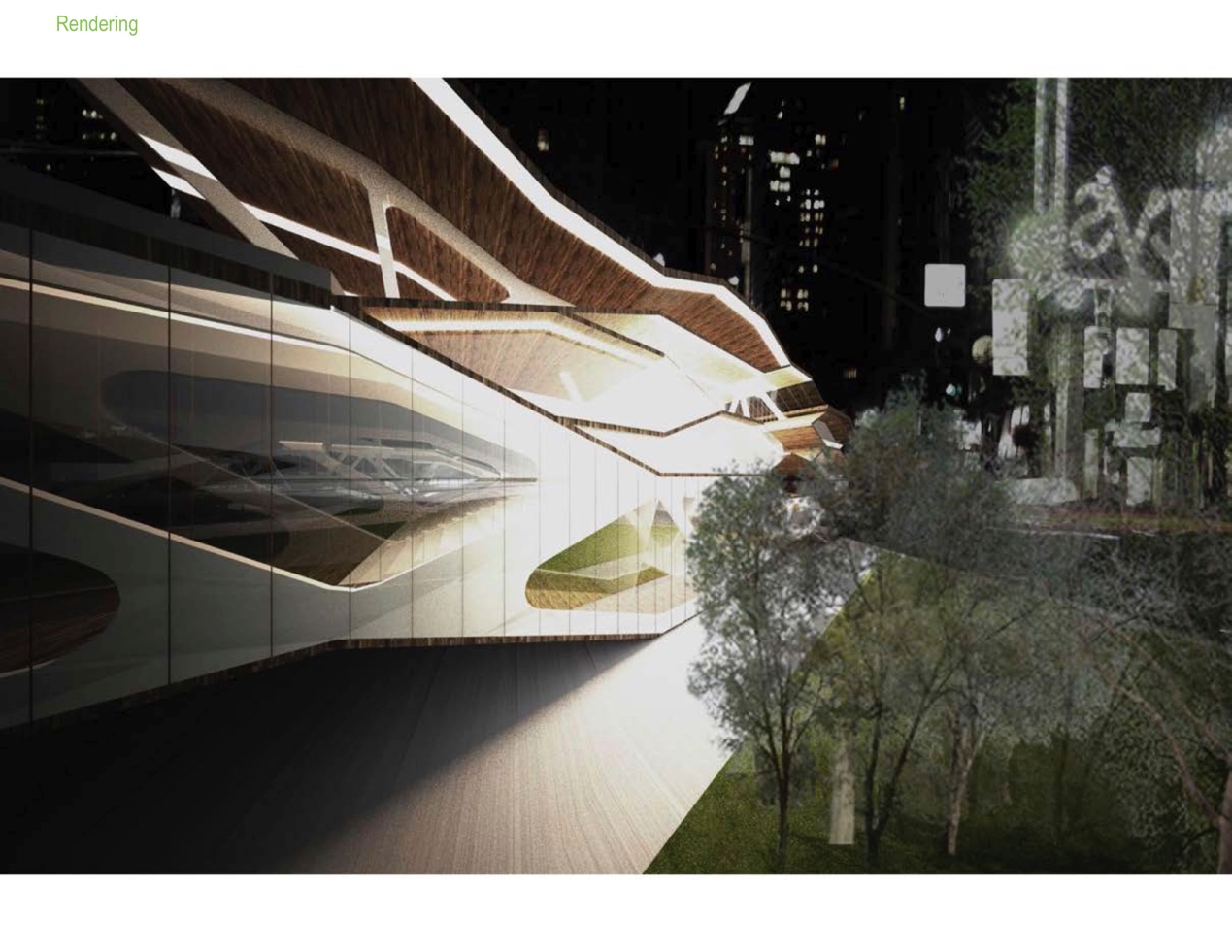
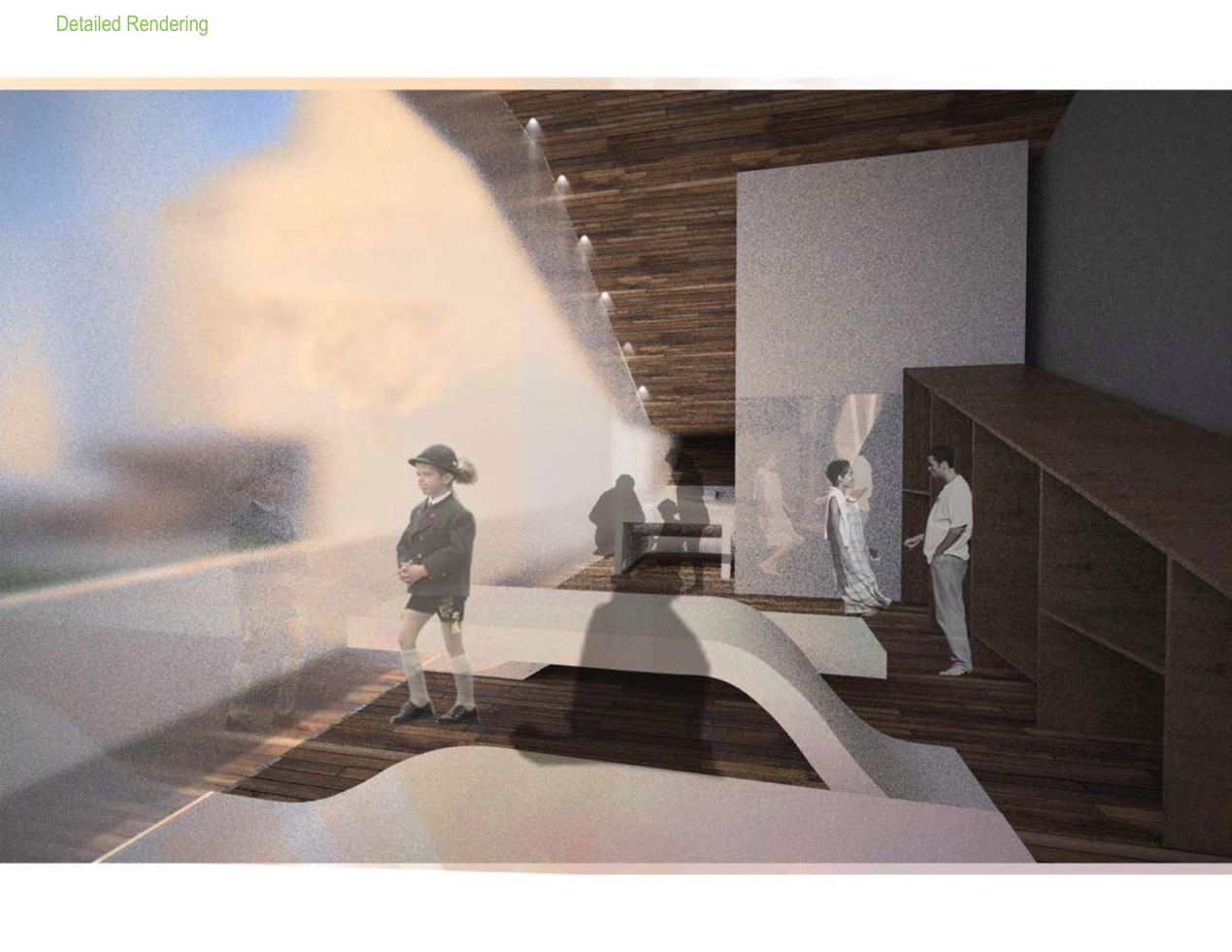
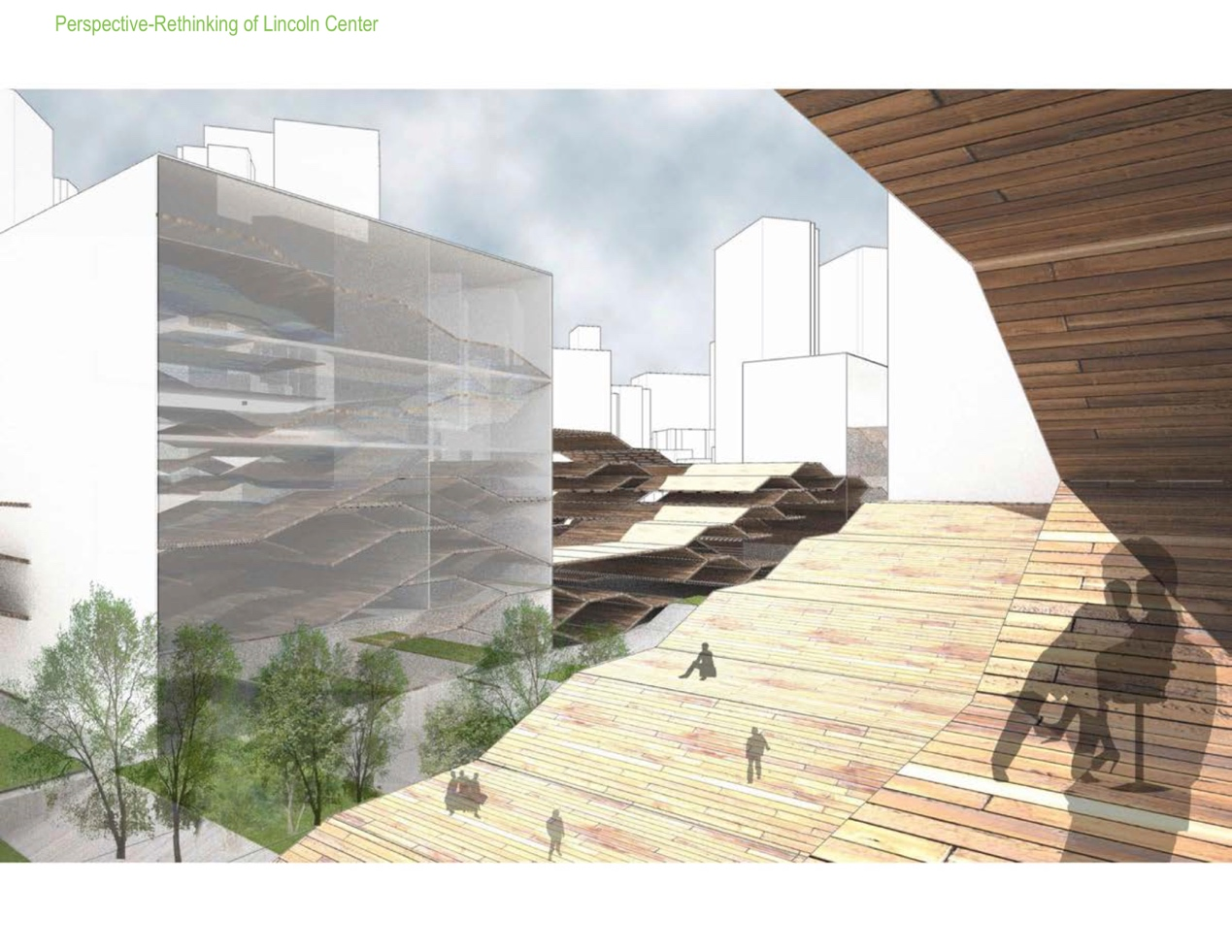
作为建筑师最为骄傲的那刻就是每一个项目的交图时间。成就感无与伦比。
One of the proudest moments as an architect is when each project is due time. The sense of achievement is unparalleled.
国际设计网:许多工作了一定年限的建筑师都会产生职业倦怠,对未来有迷茫感。您是否有过这类情况?是什么让您坚持下来?
Many architects who have worked for a certain number of years have suffered from job burnout and feel confused about the future. Have you ever experienced this situation? What keeps you going?
姜雪竹:建筑学无论是从学业还是实践上,都是一条很长的路,需要我们大家慢下来,静静沉淀。这个客观事实与发展过快的中国现况是有冲突的。如果迷茫,不妨问问自己要的是什么,目前的工作方向是否可以满足自己的需求。
如果说我的话,我也有“跪下”的时候。在这种至暗时刻,支撑我的是学生时代为了studio熬过的无数的夜,吃过的无数的苦,把自己“逼疯”也要创造些什么的激情。“仰望星空,脚踏实地”。想想心中最崇敬的建筑师,他曾经为了理想而孤注一掷的勇气和执着,我就拥有了永不放弃的精神。
It’s a long way to go in both architectural study and practice, which requires architects to slow their pace down. This objective fact is in conflict with the current situation of China, which is developing so fast. If you are confused with your future, ask yourself what you really desire, to evaluate whether your current work direction can meet your needs.
As it comes to me, I have my weak moments. In those moments, what supported me was the countless nights and hardships that I had endured for studios in schooldays, and the passion to create something even though I had pushed myself “crazy”. “Look at the stars, down to earth”. When I think of the architect I admire the most in my heart, the courage and determination that he has to realize his imagination, I gain the spirit of never giving up.
国际设计网:如今建筑设计行业从业人员转行现象比较普遍,对此您怎么看?
Nowadays, it is quite common for architectural design professionals to change their practice fields. What do you think of this?
姜雪竹:建筑行业从来都不是快速回报,高速回报的职业,从古至今都是。如果一个人中途因为各种原因放弃退出,我从自己的观点来说,他/她就没有拥有建筑师的魂,这样的人可能注定成为不了建筑师,但不妨碍他/她在自己适合的领域上大放异彩。
In all time, architectural design professional is never a quick-return profession. If a person gives up midway for various reasons, from my own point of view, he/she does not have the spirit of an architect, he/she might not be meant to become an architect, but it does not prevent him/her to shine in other fields.
国际设计网:您本人的未来职业发展目标是什么?比如成为名建筑师、自己创业,或者转到科研教学类机构工作。打算如何实现?
What is your future career plan? Such as becoming a star-architect, starting your own business, or transferring to a research/teaching institution. How are you going to do that?
姜雪竹:我仍然在充实自己专业知识的道路上慢慢行走。十二年的建筑生涯并没有让我厌倦,而让我越来越坚定自己的路。成为独立建筑师需要创造力,扎实的技术基础,商业发展能力,以及机缘。我只想说,我真的不急。
I am still on the road to enrich my professional knowledge. Twelve years of architectural experience has not made me tired, but determined. Being an independent architect requires creativity, a solid technical foundation, business development ability, and also chance. To be honest, I am really not in a rush.

国际设计网:您觉得在学生时代做设计和在工作中做设计有什么不同?
What is the difference between designing in school days and at work?
姜雪竹:学生时代的设计,对我个人而言,是纯粹的创造和创新。每一个我感兴趣的项目,我都在尽可能的在原创性上突破自己,无论最后的成果是否很“建筑”。这种探索的经历和结果不会随着学生时代的终结和消失,反而,它们在我的脑海中沉淀、酝酿,等待成熟的时机爆发。
工作中的设计偏重于创造价值。为客户负责,全方位把控设计的每一个要点,预估成果走向等繁琐而细致的工作是一种能力。有时和创造无关,更多的是作为一个专业人士对于事情的预估和把控。
这两种不同的阶段对于一个建筑师走向成熟是必不可少的。天才性的灵感和实现建成的能力,在激情和日复一日的脚踏实地中碰撞,最终升华成建筑师敏锐的直觉。这个过程我仍然在经历。我认为好的建筑师并不是在这两点上越来越分裂,而是融合在一起,真正实现理性和感性的结合。
Personally, studio projects are pure creation and innovation. For every project I am interested in, I try my best to break my boundary, to develop more possibilities, whether the final result is “architectural” or not. This experience and results of experiments will not disappear with the end of my school days. Instead, they are settling and brewing in my mind, waiting for the right moment to explode.
Design at work is more about creating value. It is an important ability to be responsible for clients, to control every detail of the design process, and to estimate the results with other elaborate work. Sometimes it has nothing to do with creation, and more with controlling the process as a professional.
These two different stages are essential for a mature architect. Inspiration and the ability to build collide with passion, and eventually sublimate into architects’ keen intuition. I am still going through this process. Good architects, in my opinion, are not more and more divided on these two perspectives, but integrate them together,then truly realize the combination of rationality and sensibility.
国际设计网:对正在学习建筑专业的学子们,您有什么建议或者想对他们说的话?
Do you have any advice for architectural students?
姜雪竹:大胆做自己。无论你喜欢什么风格,有怎样大胆的或者保守的想法,去做,去试。在学生时期追求“结果”并没有那么重要。在不断尝试中产生的那些离经叛道的想法,或者曾经犯下的错,都是你最宝贵的财富。在你日后成为成熟的建筑师的道路上,你会记得你曾经的努力和疯狂,它会支撑你实现自己的价值。
Just be yourself. No matter what style you like, how bold or conservative your ideas are, go for it. It’s not essential to pursue “results” in school days. The ideas you have and the mistakes you have made are your most valuable assets. On your way to becoming a mature architect, you will remember that you once worked so hard, it will support you to realize your own value.

